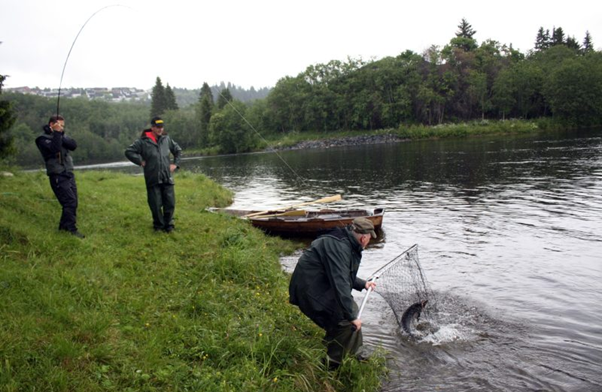Norway is the largest producer of farmed salmon in the world, exporting an estimated 1.2 million tonnes annually. However, wild salmon populations have more than halved, dropping from over 1 million in 1980 to around 500,000 today.
While the climate crisis presents a key threat to wild salmon by reducing habitat availability and lowering population resilience, the farmed fish industry has exacerbated these issues. Farmed fish escaping from enclosures have caused significant increases in the prevalence of “sea lice” in wild salmon populations. In Norway this led to the closure of 33 rivers to salmon fishing last summer.
Wild salmon fishing has long traditions among ordinary Norwegians, like those fishing along the Nidelva within the city limits of Trondheim. PHOTO: Miljødirektoratet/Jarl Koksvik
Yet, despite acknowledging that the wild North Atlantic salmon is under “existential threat”, Norway’s Climate and Environment Minister has ruled out a ban on open-net fish farming at sea. Andreas Bjelland Eriksen instead stated his focus is on reducing industrial pollution to acceptable levels, “not to stop or close down human activity itself”. While Eriksen argues that the aquaculture industry provides vital food resources worldwide, critics emphasise that ongoing pollution, sea lice outbreaks, and farmed-fish escapes are placing enormous strain on wild stocks already battered by the climate crisis. As the Norwegian Environment Agency has called for its most restrictive salmon fishing season ever, the government remains focused on regulating rather than banning open-net sea farms.
The debate over Norwegian fish farming has highlighted the delicate balance between food security and preserving precious biodiversity, an issue that resonates far beyond Scandinavia.
